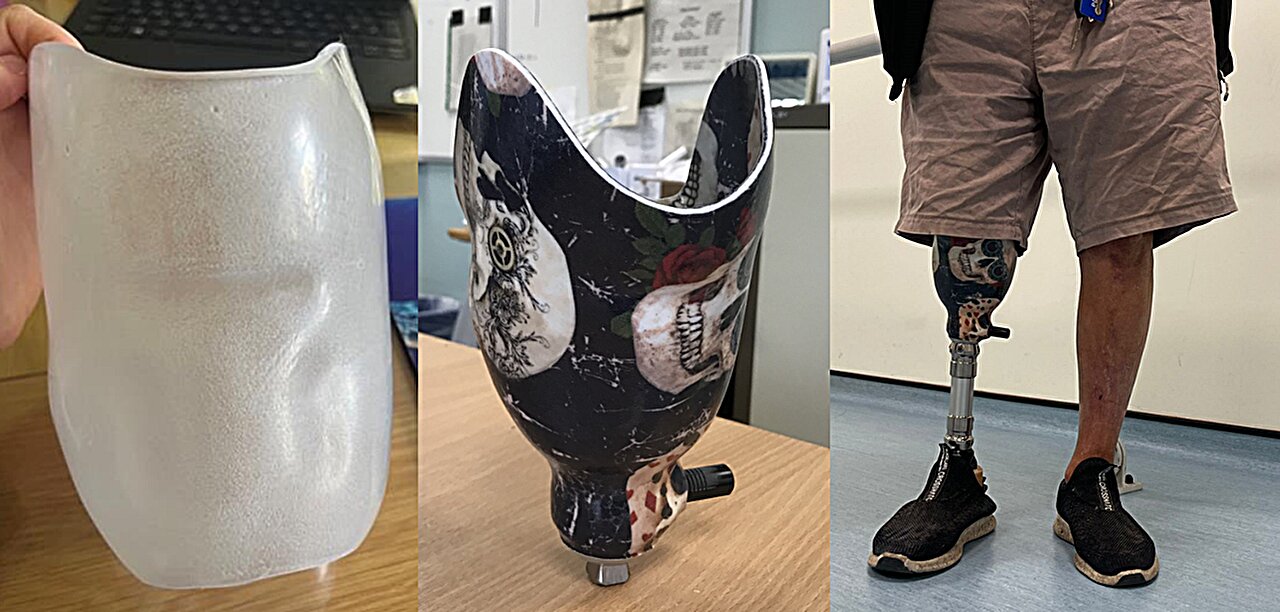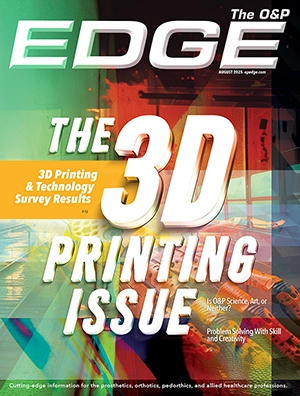Researchers at the University of Southampton and Radii Devices developed a data-driven way of fitting prosthetic legs that could lead to better-fitting prosthetics, in less time and at a lower cost. They have published the results of a trial of the method conducted with the United Kingdom’s National Health Service (NHS) concluding that transtibial prostheses designed using the new approach were as comfortable on average as those created by highly skilled prosthetists, but with more consistent results.

The team behind the software hope that data-driven socket designs will reduce the time, number of iterations, and number of appointments it takes to arrive at a prosthetic limb the patient is comfortable with. This would not only improve the patient experience, but it could also help to clear waiting lists at the NHS.
Radii Devices, a spin-out company from the University of Southampton, developed software that draws on data from previous prosthetic socket designs to generate recommendations for the most comfortable socket shape using a 3D scan of the patient’s residual limb.
“By analyzing hundreds of previous prosthetic designs, we’ve been able to identify trends between different patient characteristics, such as the shape and size of the residual limb, and successful socket shapes,” said Joshua Steer, PhD, founder and CEO of Radii Devices and a coauthor of the study. “We can then scan a new patient’s residual limb and generate a personalized design recommendation based on features that have been successful for similar patients in the past.”
To test the effectiveness of the socket designs, the team carried out a study with patients from three NHS prosthetic rehabilitation centers. Seventeen patients were given a trial socket designed by a prosthetist and one designed using the new method. They were then asked to compare the comfort of the sockets, giving them a score out of ten, and interviewed about their experience of socket fitting. The project team included physiotherapists, health scientists, and software engineers.
The study found there was no difference in the comfort scores on average, and less variation in comfort in the data-driven socket designs. Several participants preferred the fit of the data-driven socket design when asked for feedback, and had it turned into their definitive prosthetic device.
The design recommendations aren’t intended to be used on their own in clinical practice, the researchers said. Instead, they envision prosthetists working with the technology to further enhance the patient experience.
“3D scans can tell us a lot about the shape of the residual limb from the outside, but they don’t tell us what is going on under the skin. Only a highly skilled prosthetist can identify things like bone spurs and neuromas, and know how to tweak designs to avoid causing pain or damage at these sensitive areas,” said Alex Dickinson, PhD, professor of prosthetics engineering at the university. “We developed the data-driven socket design approach to save prosthetists’ time by giving them a solid base to work from so they can use their expertise where it is most valuable, in making precise adaptations tailored to their patients’ specific needs. The method effectively helps prosthetists to learn from each other.”
Nearly 100 people have now had a prosthetic leg designed this way, across multiple centers in the United Kingdom and the United States.
“This study was designed to test the ‘worst-case’ use of data-driven socket designs, with no additional input from prosthetists,” said Maggie Donovan-Hall, PhD, professor of psychology in prosthetics and orthotics at the university and co-author of the study. “The fact they performed so well in these circumstances is both surprising and encouraging, but the real value of this tool is to give the prosthetist a starting design quickly, meaning they can spend much more of their time working with their patient on perfecting the more complex, personalized aspects of the design. This is what prosthetists spend years learning and is most crucial to their patients’ experience.”
The final stage of this study is now underway, where the software interface is being developed with clinicians to provide them with the most effective way to incorporate data-driven socket designs into their practice.
The open-access study, “Evidence-generated sockets for transtibial prosthetic limbs compared with conventional computer-aided designs: A multiple-methods study from the patient’s perspective,” was published in JMIR Rehabilitation and Assistive Technologies.
Editor’s note: This story was adapted from materials provided by the University of Southampton.



